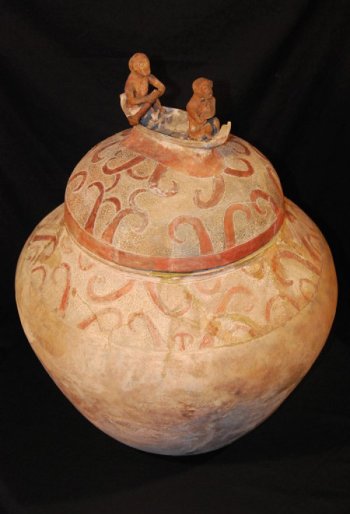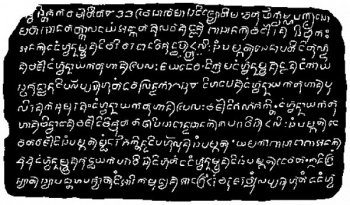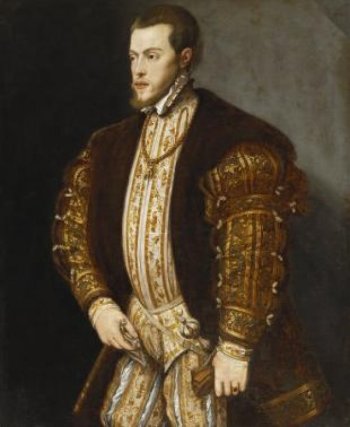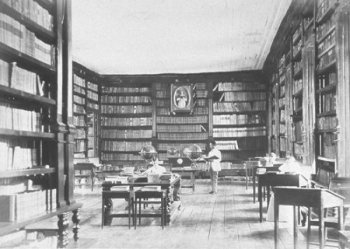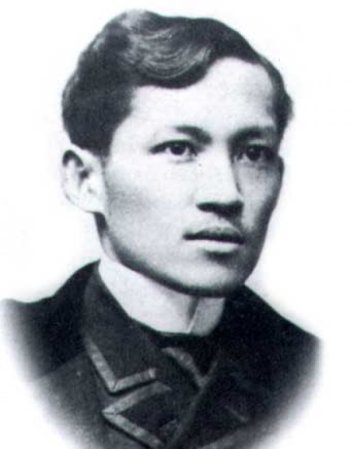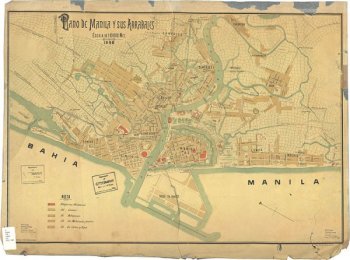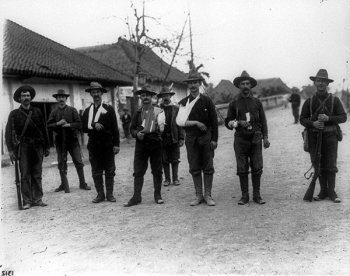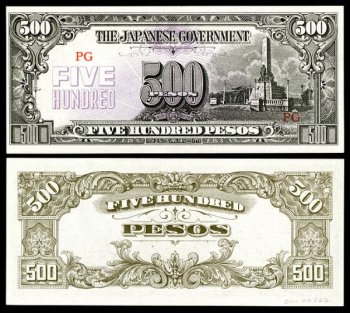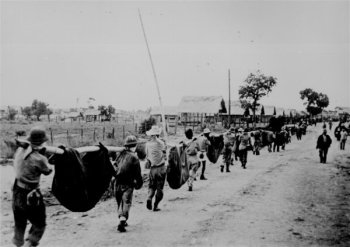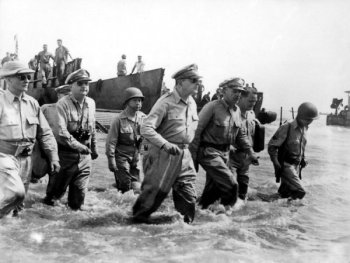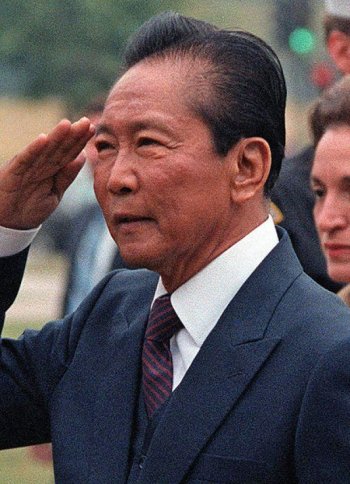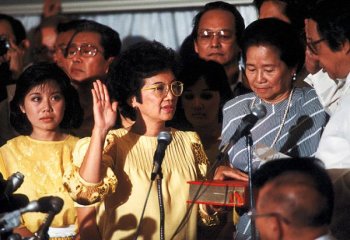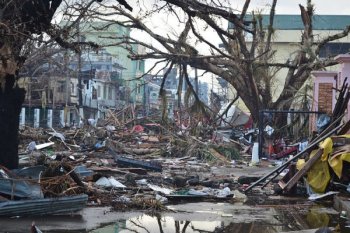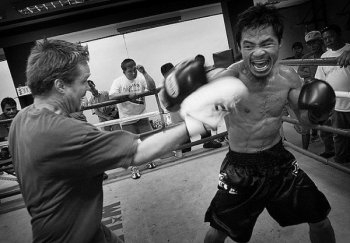History: Historical Timeline
Prehistory
| Date | Event |
|---|---|
| 65,000 BCE | Homo sapiens dwells in the area that later becomes the Philippines, possibly using tools constructed from bamboo or other organic materials to butcher animals for meat. |
| 48,000–5000 BCE | Humans migrate into the area as part of an Austronesian expansion around 4000 BCE, possibly via trade networks from Sundaland or via the Malayo-Polynesians from Taiwan. In either case, the Malayo-Polynesians take up permanent residence on the islands. |
| 1000 BCE | Four distinct tribal peoples now inhabit the archipelago, including the Aetas, Hanunoo, Ilongots, and the Mangyan, all primarily hunter-gatherers living primarily in the forests. Other groups, including the Isneg and Kalinga peoples, are warrior tribes with complex social structures and ritualized warfare. The tribes begin trading with one another. |
| 300–700 CE | Seafaring tribes traveling in large, wooden boats called balangays trade with kingdoms in the Malay Archipelago and nearby East Asia, bringing home with them both Buddhist and Hindu influences. |
| 900–1521 | A flourishing kingdom based on seafaring is well established in the area known as Tondo. The kingdom conducts active trade with the Chinese, Japanese, and Malays, among others. Over more than 500 years, it grows into one of the richest and most powerful of the pre-colonial states. Nevertheless, the Dynasty of Tondo competes with other large rajahnates, including Cebu and Butuan. Meanwhile, adventurers from other Asian kingdoms arrive on various islands to establish settlements and cities. The Madja-as flee from the island later called Borneo to settle the central islands, while Japanese traders set up the Country of Mai (on the island later called Mindoro), which becomes a thriving trading state. |
Colonial Era
| Date | Event |
|---|---|
| 1521 | Seeking to break Tondo's stranglehold on trade with China, the Bruneian Empire attacks Tondo and establishes the State of Selurong in what later becomes Manila, providing an influential foothold for Islam. From this base, Islam spreads rapidly, spurred by proselytizers from Malaysia and Indonesia. This same year, Portuguese explorer Ferdinand Magellan, sailing under the Spanish flag, arrives on the island of Homonhon, claiming it for Spain. The era of Spanish colonialism begins. |
| 1543 | Numerous Spanish expeditions visit the islands in the years since Magellan claimed them for Spain. On his arrival, Ruy López de Villalobos names the place after King Philip II, and from this point on the region is known as Las Islas Filipinas. |
| 1565 | The first permanent European settlement rises on the island of Cebu with the arrival from Mexico of Miguel López de Legazpi, a Spanish explorer who leads 500 men on five ships, accompanied by Augustinian monks. Two years later, 200 more soldiers reinforce those already here, repelling an incursion by the Portuguese and launching Spain's colonization in earnest. Over the next six years, the Spanish occupy the kingdoms of Maynila and Tondo, building their capital in Manila. Officially, the Philippines is part of the Viceroyalty of New Spain, based in Mexico, which may explain how traces of Aztec and Mayan culture appear here, along with chico, a fruit indigenous to Mexico. |
| 1590 | Hopping from island to island across the archipelago, the Spanish succeed in unifying the region under its rule and subduing resistance nearly everywhere except Mindanao, where the sultanates continue to prevail. The Jesuits establish the Colegio de Manila, which later becomes the Universidad de San Ignacio. At the same time, Jesuits open schools around the country, teaching children Spanish and other subjects, and spreading Catholicism far and wide. |
| 1646 | The Dutch send a powerful naval force to Manila Bay in hopes of invading the Viceroyalty of New Spain, but are defeated by Spanish-Filipino forces far inferior in number. Spanish rule continues virtually uncontested. |
| 1762 | September 4. A British naval squadron, reinforced with British Army soldiers and mercenaries of the British East India Company, arrives in Manila from its base in Madras, India. In less than two weeks, Great Britain vanquishes the Spanish garrison and Manila falls to the British. |
| 1764 | Never able to subdue the opposition to its presence in Manila, British authority breaks down, and the British board their ships and leave, returning control of the Philippines to the Spanish. |
| 1821 | Mexico's independence from Spain disbands the Viceroyalty of New Spain. Authority for the Philippines reverts to Spain, which for the first time exercises direct control over the colony. |
Modern Era
| Date | Event |
|---|---|
| 1869 | The opening of the Suez Canal dramatically reduces travel time from Spain to the Philippines, enabling those who attend the widely available Spanish-speaking schools across the archipelago to continue their studies in Spain and Europe, leading to an educated class. In addition to schools, the Spanish invest in massive development projects, including a railroad for Luzon, a tram system for Manila, and the Quezon Bridge, the first steel suspension bridge in Asia. |
| 1878 | The Philippines prosper under Spanish rule, which brings not only schools, hospitals, and infrastructure to the islands, but also significant trade. Between 1877 and 1898, the population increases from approximately 5.6 million to more than 7.8 million, according to Spanish census reports. |
| 1887–1892 | While in Europe, medical student and novelist José Rizal publishes Noli Me Tángere (Touch Me Not), which criticizes Spanish treatment of Filipinos under colonial rule. The book is promptly banned in the Philippines, though smuggled copies circulate. Undeterred, in 1891 Rizal publishes El Filibusterismo (The Reign of Greed), calling for Filipino equality and representation in the Spanish parliament. For these books, and for his founding of La Liga Filipina (The Philippine League), which advocates non-violent resistance, Rizal is declared to be an enemy of the state and exiled to Dapitan. His books continue to be highly influential in the country's growing distaste for Spanish rule. |
| 1896 | An armed revolt against Spanish rule, led by militant group Katipunan, erupts across the country. Suspected of involvement because of his ties to Katipunan members, José Rizal is arrested in Spain and extradited to Manila, where he is convicted of sedition and executed. As the years pass, Rizal is elevated to the status of a national hero, and his books later become required reading in Filipino schools. Though the Spanish succeed in quelling the rebellion in Manila, much of the territory beyond the capital is in open rebellion. |
| 1898 | The Spanish-American War brings the US Navy to Manila Bay, where its Asiatic Squadron defeats the Spanish navy. With the American seizure of Manila, rebels in the provinces succeed in gaining control outside the capital. December 10. The Treaty of Paris is signed, ending the Spanish-American War and more than 350 years of Spanish rule over the Philippines. American control over the Philippines replaces it. |
| 1899 | February 4. Hopes that the US will support Philippine independence are crushed when the Americans distance themselves from the anti-Spanish rebels. War erupts between Filipino and American forces in what amounts to an attempt at revolution. Declaration of the First Philippine Republic and war against the United States do nothing to dislodge the Americans, who squelch the revolt and remain firmly in control. In 1902, the future US president, William Howard Taft, becomes governor-general of the Philippines. |
| 1900 | The Gross Domestic Product per capita reaches US$1,033, making the Philippines the second most affluent place in Asia, just slightly behind Japan. |
| 1916 | President Woodrow Wilson of the United States promises eventual independence for the Philippines, promoting the Jones Law, which provides for elections for both houses of the bicameral legislature. Despite occasional guerilla insurgencies for independence, the Philippines prospers, with trade rising dramatically, mortality decreasing due to a national healthcare system, and the suppression of slavery and piracy. The Americans make English the official language. |
| 1934 | The US Congress passes the Tydings-McDuffie Act, establishing the Commonwealth of the Philippines and a ten-year transition to full independence. The following year, the Philippines adopts the Constitution of the Republic of the Philippines. |
| 1941 | December 8. Just ten hours after the attack on Pearl Harbor in Hawaii, Japanese forces conduct a surprise attack on Clark Air Base, the sprawling US military facility in the Philippines. Unable to defend the island against the larger Japanese ground force, the US and Filipino troops, led by General Douglas MacArthur, withdraw to the Bataan Peninsula and the island of Corregidor at the edge of Manila Bay. |
| 1942 | US and Philippine forces surrender to the Japanese in April. On a forced march to a prisoner of war camp, some 10,000 Filipinos and 1,200 American troops die in what becomes known as the Bataan Death March. MacArthur withdraws to Australia, vowing as he leaves, “I shall return.” |
| 1944 | Japan's control of the Philippines is beset by ongoing guerilla resistance so fierce and pervasive that Japan controls only 12 of the Philippines' 48 provinces. October. True to his word, MacArthur returns to the Philippines, leading his Sixth Army from its landing point on Leyte all the way to Manila. The US victory over the Japanese comes at a terrible cost: nearly 140,000 US soldiers die, some 10,000 US soldiers are missing in action—the most of any theater in World War II—an estimated one million Filipinos perish during the war, and Manila is all but destroyed. |
| 1946 | July 4. Ten years after its transition to independence begins, the Philippines' first truly independent president, Manuel Roxas, takes office. |
| 1953 | The popular President Ramon Magsaysay promotes land reform and undertakes a large program to counter Islamic influence in the north by resettling thousands of poor Catholics into traditionally Muslim communities. When Magsaysay dies in an airplane crash in 1957, the country is deeply shaken. |
| 1965 | Ferdinand Marcos is elected president, launching a series of far-reaching development initiatives aimed at improving infrastructure, primarily with the construction of roads—including the Pan-Philippine Highway—and schools, more than any previous administration. He successfully improves tax collections, and during his first term the country prospers. |
| 1969 | Marcos is the first president since independence to win a second term in office. When opponents thwart his legislative agenda, economic growth slows. As a result, crime and civil disobedience are on the rise, and the Communist Party begins to attract new followers. On Mindanao, the Moro National Liberation Front fights for an independent Muslim nation. |
| 1972 | September 21. The twin perils of worsening urban crime and a growing Communist insurgency lead Marcos to declare Martial Law. He curtails press freedom, limits civil liberties, abolishes congress, and arrests opposition leaders, including the immensely popular Benigno Aquino, Jr.—husband and father, respectively, of two future presidents. Many opposition leaders are forced into exile. Despite the political crackdown and dictatorial rule, the economy continues to prosper; in the 1970s, GNP expands nearly fourfold, rising from 55 billion pesos to 193 billion pesos. Rampant corruption among the ruling elite does little to dampen the country's prosperity. |
| 1978 | Manny Pacquiao, world renowned boxer, is born. Pacquiao wins matches against several of the world's best boxers, winning world titles in eight weight divisions and becoming a national hero. He is known for his footwork and speed, as well as for his good looks and charisma. In 2003, he is voted the Philippine Person of Year, and is named the Fighter of the Decade by the Boxing Writers Association of America for the years 2000-2009. |
| 1981 | January 17. Marcos ends Martial Law, but the government's power to arrest opposition leaders remains intact. Corruption and nepotism take their toll, drastically slowing economic growth. The political opposition boycotts presidential elections, leading to a Marcos victory for yet another six-year term. |
| 1983 | August 21. Upon his return from exile, the popular opposition leader Benigno Aquino, Jr. is assassinated at Manila International Airport. The airport is later renamed for Aquino, and the date of his death becomes a national holiday. Aquino’s death sparks massive opposition to Marcos’ rule. |
| 1986 | Under pressure from the United States, Marco, who is in poor health, calls a snap election. The opposition unites behind Aquino's widow, Corazon Aquino. In an election widely viewed as fraudulent, Marcos declares himself the winner, prompting the country's two highest-ranking military figures to withdraw their support of Marcos. A largely peaceful uprising of both civilians and the military, known as the People Power Revolution, sends Marcos into exile and lands Corazon Aquino in the presidency. |
| 1987 | A new constitution spearheaded by Aquino limits presidential power to declare martial law while granting new autonomy to the regions of Cordilleras and Mindanao. The constitution restores the bicameral legislature, but the president's perceived weakness lead to several coup attempts by members of the military. |
| 1991 | The United States gives up its leases of Clark Air Base and Subic Bay Naval Bases, two huge installations that end nearly 100 years of US military presence in the Philippines. |
| 1992 | Fidel Ramos wins the presidency in a fractious election and immediately sets out an agenda of national reconciliation. He succeeds at pacifying the various rebel movements (with the exception of the Moro National Liberation Front, which continues to agitate for an independent Muslim state on Mindanao). |
| 2001 | Following the impeachment of Joseph Ejercito Estrada on corruption charges, Vice President Gloria Macapagal-Arroyo ascends to the presidency, but fails to unite the country's divided politics. She wins election to a full term in 2004, but her administration is hampered by scandal and political fractiousness. |
| 2010 | June 30. Benigno Aquino III, son of the slain opposition hero and former People Power president, is elected president on an anti-poverty, reform platform. As with his predecessor, a mix of scandal and political division hobbles his reform agenda. |
| 2011 | The government and communist New People's Army (NPA) agree to peace talks after a breakdown in 2004. |
| 2012 | Settling 13 years of debate, parliament votes to approve state-funded contraception and defies Catholic Church. |
| 2013 | Also known as Super Typhoon Yolanda, Typhoon Haiyan is one of the strongest tropical cyclones ever recorded, killing 6,300 in the country alone and affecting over 4 million. |
| 2015 | January 15. Pope Francis visits the Philippines, lifting spirits of the predominantly Catholic country as it struggles to recover from the typhoon, Muslim insurrection, and a faltering economy. Clashes with Muslim rebels on Mindanao leave 44 police dead. |
| 2016 | June. Rodrigo Duterte elected president. |
| 2017 | The city of Marawai is freed after being held for almost five months by jihadist fighters. |
| 2018 | June. Police arrest more than 10,000 people they say are loitering in the streets, mainly from poor and densely populated districts, in a move human rights groups call, "anti-poor." |
| 2019 | President Duterte signs the Universal Health Care Act into law, providing access to quality and affordable health care for all Filipinos. |
| 2020 | January 30. Philippine health officials affirm that the country's first confirmed case of the deadly new coronavirus, COVID-19, occurred in a 38-year-old woman who traveled to the Philippines from Wuhan, China, where the virus was first reported. The spread of the virus is declared a pandemic by the World Health Organization on March 11. October–November. Several typhoons occur in short succession, including Typhoon Ulysses and Super Typhoon Goni (Rolly in the Philippines)—which is called the country's strongest storm of 2020 and kills at least 20 people while displacing about 400,000. Category 5 Goni's peak wind speeds are clocked at 313 kph (195 mph). |
| 2021 | July. Hidilyn Diaz becomes the Philippines' first Olympic gold medalist after winning the women's 55-kilogram weightlifting category in the Tokyo 2020 Olympics, postponed one year due to the global coronavirus pandemic. October. The Nobel Peace Prize for 2021 is awarded to the Philippines' Maria Ressa and Russia's Dmitry Muratov for, "their efforts to safeguard freedom of expression, which is a precondition for democracy and lasting peace," according to the press release from Norway's Nobel Committee. The announcement continued: "Ressa uses freedom of expression to expose abuse of power, use of violence, and growing authoritarianism in her native country, the Philippines." In 2012, Ressa co-founded Rappler, a digital media company for investigative journalism. |
| 2022 | May. Ferdinand “Bongbong” Marcos Jr. becomes the country’s 17th president. He is the son of former dictator, Ferdinand Marcos Sr., who was the country's president from 1965 to 1986. |
Copyright © 1993—2025 World Trade Press. All rights reserved.

 Philippines
Philippines 